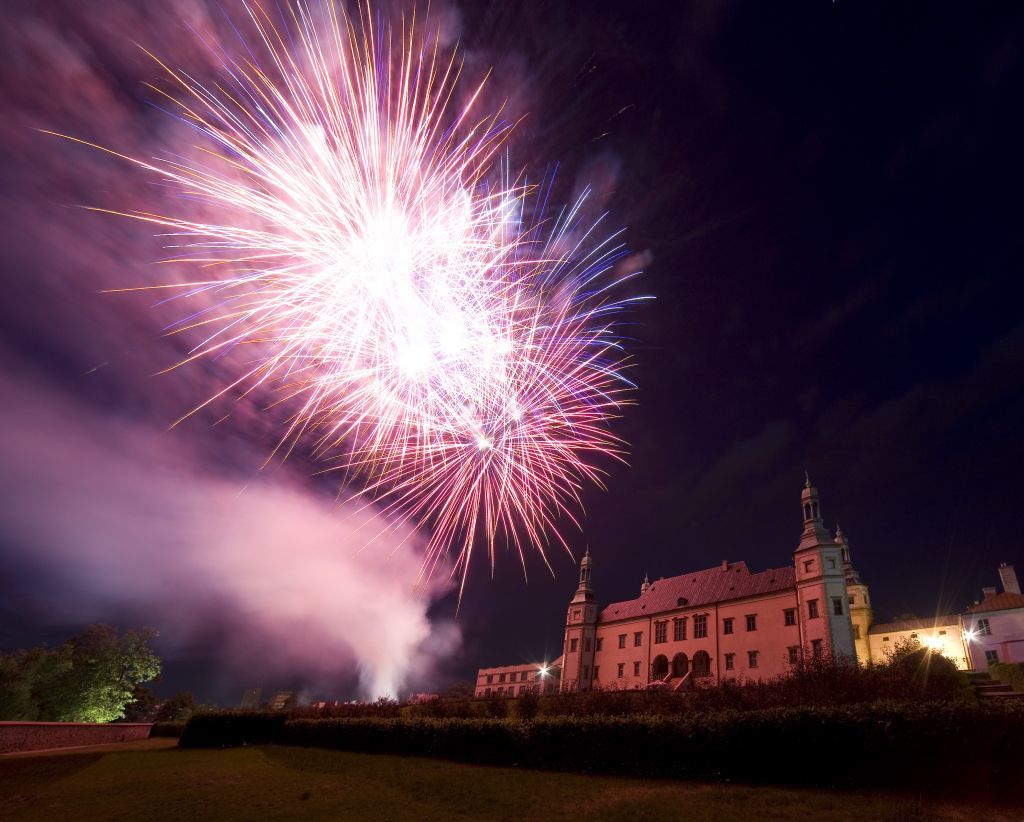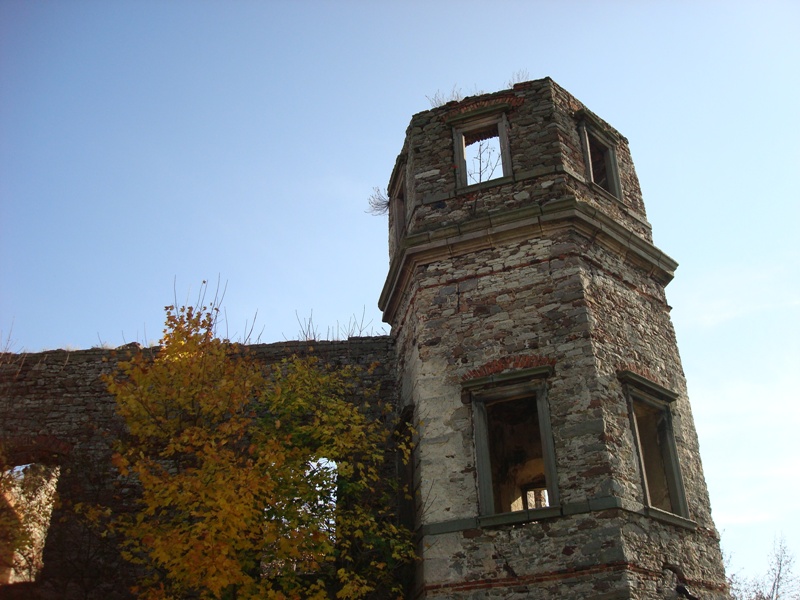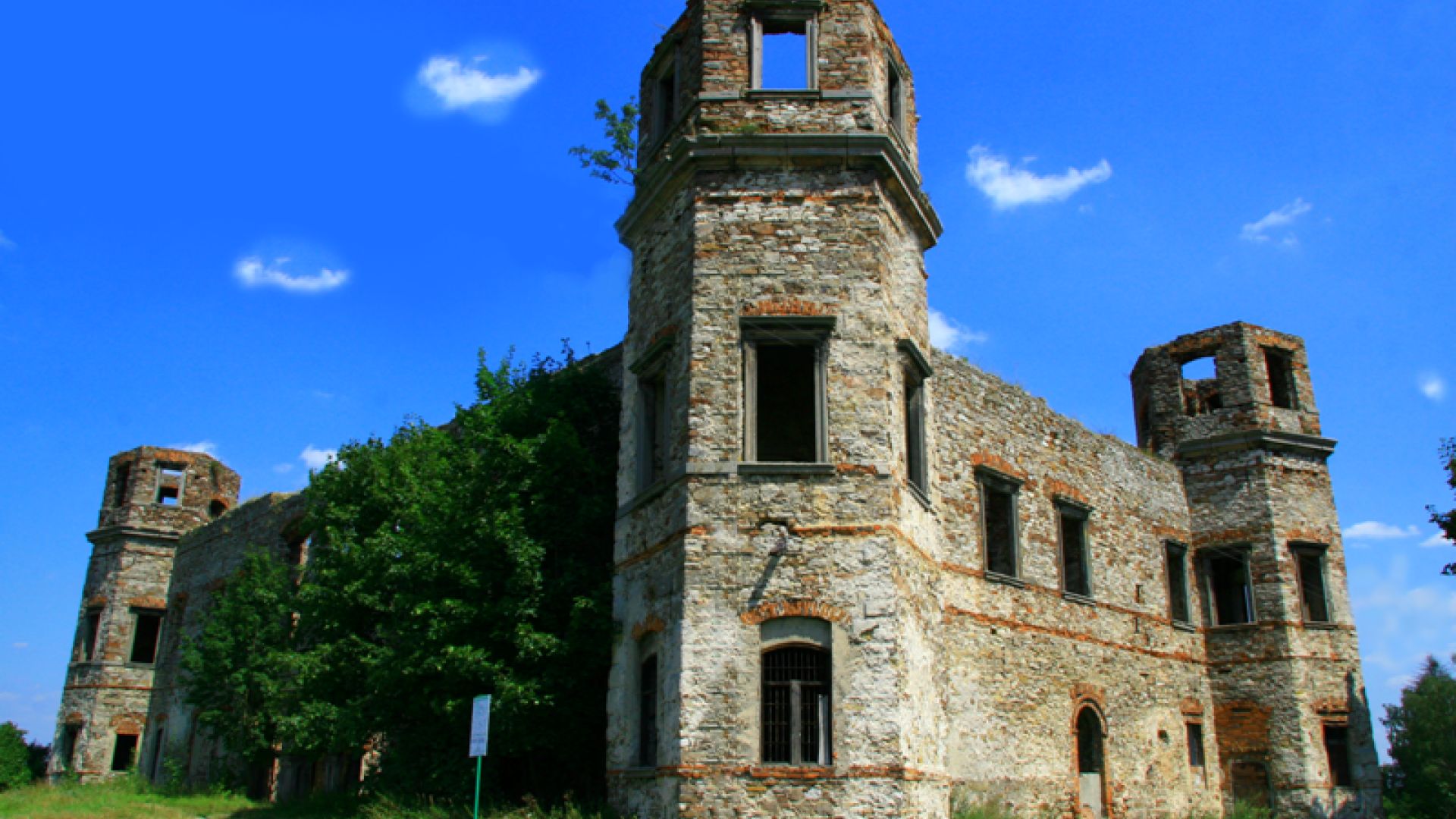The route consists of the area attractive from the point of view historical monuments and unique nature. The cyclists will take historical experience in the capital of Swiętokrzyskie Voivodeship, delight in the beauty of the Jaworznia quarry and admire picturesquely ruins of Podamcze Piekoszowskie.
Course: Kielce - Jaworznia - Łaziska - Piekoszów - Podzamcze Piekoszowskie
Lenght: 21,5 km
Colour: red
Dificulty: intermediate
 photo K. Pęczalski
photo K. Pęczalski Kielce - the town rapidly develops in the early Middle Ages. Many forging workshops and ironworks are built around the town in the 14th century; their production based on the local deposits of iron ore. In 1816 Kielce became an important center of administration in the Kingdom of Poland. At that time mining and metallurgical industry grew in importance. It was in Kielce that Stanisław Staszic established the Main Mining Directorate in 1816. Soon afterwards the Mining Academy was inaugurated. It was the first technical high school in Poland. Good times returned and the city gained many new lodgings, services, paved streets, sewage facilities and public green spaces. In 1867 Kielce became a provincial capital. New investments were made; a railway line joining Ivanogrod (today Dęblin) with the Dąbrowskie Industrial Center was opened; lime-kilns of Kadzielnia, Wietrznia and Międzygórze were put into operation. In the city worth to see is Baroque Palace of the Cracovian Bishops. Built on a square plan, the main part of this early-Baroque structure occupies the Wzgórze Zamkowe (Castle Hill). Its arcaded front is decorated with three coats-of-arms made of stone: the Korab belonging to bishop Zadzik, the Eagle of the Commonwealth from the Vasa dynasty period, and the Three Crowns of the Cracovian Chapter. Cathedral of the Ascension of the Holy Virgin Mary The highlight of the city"s architecture, the Baroque building of the cathedral retained some Romanesque elements. It faces the Bishops" Palace and stands on the Wzgórze Zamkowe. The first Romanesque church was erected here in 1171. Altered several times during the subsequent centuries, the church acquired its present-day shape in the 19th century. On the other hand, Toy & Entertainment Museum which was set up in the 1970s, it"s the biggest museum of that type in Poland. Its collection of a few thousand toys occupies an area of 700 square meters. The following are the most precious items of the collection: a German wax doll (18th c.), dolls with porcelain heads in costumes from the 19th and 20th centuries, lead soldiers (19th c.), and furnished rooms for dolls. Beside old items, there are also folk toys and modern entertainment exhibits.
Jaworznia - the village is situated 10 km from Kielce. The name of the place is connected with flora. One should notice “Jaworznia” - already closed Devonian limestone quarry. In this place the largest cave system in the Świętokrzyskie Mountains has been discovered: Chelosiowa Cave, Jaworznicka Cave and Pajęcza Cave. Black hiking trail from Piekoszów to Zgórsko leads through the village.
Piekoszów – the noble Odrowąż family had the first church dedicated to St James the Apostle built in Piekoszów in 1366. It became a local sanctuary thanks to the miraculous picture of Our Lady with Child painted by a Pauline monk from Częstochowa (Sanctuary of Black Madonna) in 1691. A bigger three-nave church was erected to meet the needs of the growing number of pilgrims. The picture was crowned by the Primate of Poland Cardinal Stefan

Wyszyński in 1968. The crowns were stolen fifteen years later. The re-coronation ceremony took place in 1986 and was celebrated by the Primate of Poland Cardinal Józef Glemp.
Podzamcze Piekoszowskie - this little village hosts ruins of the palace once belonging to the powerful Tarło family. Castellan Jan Tarło had an early-Baroque palace erected here in the years 1645-1650. It was patterned on the palace of Cracovian bishops in Kielce. Damaged by fire in the mid-19th century, the palace was never restored. Some windows still have their frames and four characteristic towers, once with spiral staircases inside, can be identified.
More information: www.sejmik.kielce.pl
